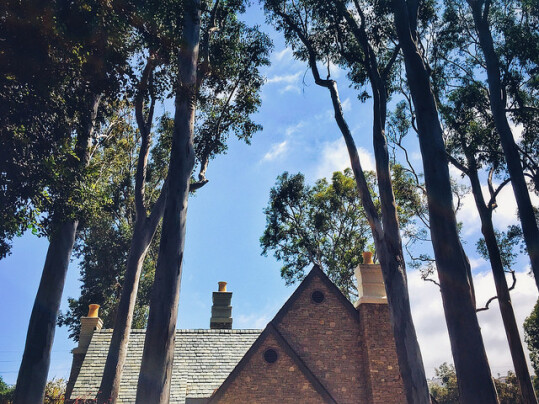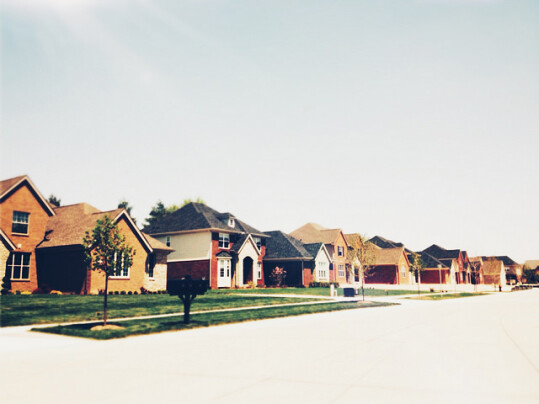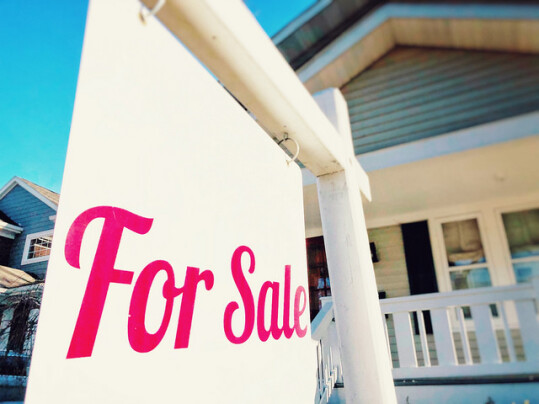Buying a home has become less affordable over the past year. Home prices have surged as buyer demand outpaced the inventory of homes for sale. But while homeownership has gotten less affordable, it’s still within the average Americans’ financial means, according to a new report from ATTOM Data Solutions. Their fourth-quarter 2021 U.S. Home Affordability Report found that the cost of owning a median-priced home now consumes about 25 percent of the average national wage of $65,546. That’s within the 28-percent standard lenders use to determine whether or not borrowers can afford a monthly mortgage payment, insurance, and taxes. In other words, homeownership may have gotten less affordable but it hasn’t become unaffordable. “The average wage earner can still afford the typical home across the United States, but the financial comfort zone continues shrinking as home prices keep soaring and mortgage rates tick upward,” Todd Teta, ATTOM’s chief product officer, said. Teta says rising wages and still-low mortgage rates are helping to balance home-price increases, which has kept the cost of homeownership manageable. (source)
Archive for December 2021
Pending Home Sales Fall 2.2% In November
The National Association of Realtors’ Pending Home Sales Index tracks the number of contracts to buy homes that are signed each month. Because it tracks contract signings, not closings, it can be a good indicator of future home sales. In November, the index found pending sales down 2.2 percent from the month before. Lawrence Yun, NAR’s chief economist, says home buying conditions are challenging right now but relief may be on the way. “There was less pending home sales action this time around, which I would ascribe to low housing supply, but also to buyers being hesitant about home prices,” Yun said. “While I expect neither a price reduction, nor another year of record-pace price gains, the market will see more inventory in 2022 and that will help some consumers with affordability.” Regionally, contract signings were mostly flat except for in the Midwest, where they fell 6.3 percent. The West also saw a decline, with contract activity down 2.2 percent month over month. (source)
Home Prices Increase But At A Slower Pace
These days, housing market conditions are fairly easy to understand. There are fewer homes for sale and, because of that, home prices continue to rise. It’s simple supply and demand. When there are fewer homes for buyers to choose from, the ones that are available go for a higher price. But while that’s been the case for a while now, the most recent S&P Case-Shiller Indices – considered the leading measure of U.S. home prices – offers some encouraging news. The index found that, while prices are still climbing, they’re now increasing at a slower pace. Craig J. Lazzara, managing director at S&P, says, in many of the cities the index tracks, price increases have slowed. “We continue to see very strong growth at the city level,” Lazzara said. “As was the case last month, however, in 14 of 20 cities, prices decelerated – i.e., increased by less in October than they had done in September.” But while the rate of increases has slowed, prices are still rising at a double-digit pace. In fact, October’s gain was the fourth-highest reading in the 34 years S&P has been tracking price data. (source)
New Home Sales Up 12.4% In November
New-home sales surged in November, rising 12.4 percent from the month before, according to new numbers from the U.S. Census Bureau and the Department of Housing and Urban Development. The increase pushed sales to their highest level since April. Combined with the recently reported increase in existing-home sales, the improvement is further evidence that buyer demand remains high, even at a time of year when home sales typically slow due to winter weather, fewer listings, and the holidays. But while winter usually sees buyers putting their home search on hold until spring, this year, buyers remain active. One possible explanation is the expectation that mortgage rates will move higher next year. And while the expected rate increases should be modest, buyers may still be looking to lock in a low rate before they go any higher. Regionally, the report found the biggest improvement in the West, where sales rose 53.2 percent. The Northeast saw a 15.6 percent increase, while the South gained 2.6 percent. Only the Midwest saw a decline, with sales dropping 25.4 percent month over month. (source)
Mortgage Rates Fall To Four-Week Low
According to the Mortgage Bankers Association’s Weekly Applications Survey, average mortgage rates fell to a four-week low last week. Rates were down for loans backed by the Federal Housing Administration and 30-year fixed-rate mortgages with both conforming and jumbo balances. The decline helped push refinance activity up 2 percent from the week before. But while refinancing homeowners were more active, home buyers weren’t. In fact, demand for loans to buy homes fell 3 percent from one week earlier. Joel Kan, MBA’s associate vice president of economic and industry forecasting, says the high end of the market is seeing more activity these days. “The average purchase loan increased for the second straight week to $416,200 – the second highest amount ever,” Kan said. “The elevated loan size is an indication that activity is more on the higher end of the market.” The MBA’s weekly survey has been conducted since 1990 and covers 75 percent of all retail residential mortgage applications. (source)
Homes For Sale Still Selling Quickly
In November, the typical home for sale was on the market just 18 days, according to new numbers from the National Association of Realtors. That’s down from 21 days in November 2020 but unchanged from the month before. Overall, 83 percent of homes sold in less than a month. The numbers are evidence that the lack of available inventory means home buyers continue to face a challenging, fast-paced market. In fact, the NAR found there was only a 2.1-month supply of existing homes available for sale in November. A 6-month supply is generally considered healthy. Lawrence Yun, NAR’s chief economist, says buyers remain motivated, though, due to the expectation that mortgage rates will rise in 2022. “Locking in a constant and firm mortgage payment motivated many consumers who grew weary of escalating rents over the last year,” Yun said. “Mortgage rates are projected to jump in 2022, however, I don’t expect the imminent increase to be overly dramatic.” Motivated buyers pushed sales of previously owned homes up 1.9 percent month over month. It was the third consecutive month sales increased. (source)
How Much Competition Will Winter Buyers Face?
Home buyers faced a lot of competition this year. Elevated demand and fewer homes available for sale meant interested buyers had to be ready for a bidding war or risk losing a good house to a better prepared buyer. This was certainly true during the spring and summer markets. In fact, according to one measure, 74.6 percent of offers faced competition in April. Fortunately, though, that was the peak. And, as the summer market turned to fall, buyer competition began to slow. By October, the number of offers that saw competition from other buyers had fallen to 61.8 percent. From there, it fell even further. The most recent numbers available show the competition rate was 59.5 percent in November – the first time since December 2020 that it dropped below 60 percent. But while that’s a good indication that winter buyers will face less competition than earlier in the year, the rate in November was still up 2 percent from the year before. In other words, though the market isn’t as hot, buyers still need to be prepared, since competition remains high and most homes continue to draw multiple buyers. (source)







